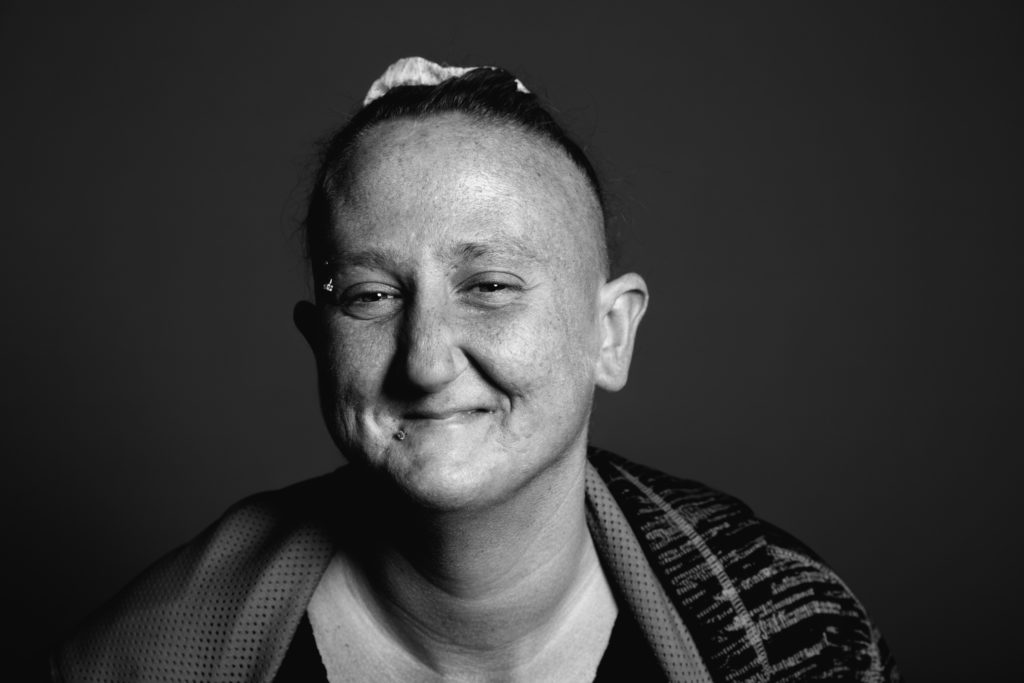Human Faces Tour En Route!
April 22, 2017: Steven Stauffer and I begin the 2017 Laughter Is Sacred Space Human Faces Tour in Tucson, AZ at Shalom Mennonite Fellowship, to an almost full house. I could feel, despite the loss of amplification, an audience leaning in to absorb the story I had to tell and give back their empathy and spirit.
We were humbled again by people’s vulnerability regarding their stories of struggle and perseverance in the face of mental illness.
In the talk-back, one of the questions was answered by a woman from the audience, “If you want to know what a church could do in regard to educating themselves about mental health and mental health, ask me…someone who is mentally ill. Don’t be afraid to ask someone who knows really well what a congregation might need to know.”
Yes, wise words.
It might get uncomfortable and messy when we ask for the truth, but the verse doesn’t read, “where two or three are gathered together, everyone will be comfortable”

A beautiful face from Tucson, AZ. Photo by Steven Stauffer

And another… Photo by Steven Stauffer
April 29, 2017: Back with good friends at Portland Mennonite, the questions in the talk-back pushed me to reflect of the nature of healing and grief work. I have said many times this show is a catalyst to healing for me, but pointed observations and gentle admonitions compel me to ask perhaps deeper questions.
A question asked: “Does reliving your own trauma on a nightly basis help you in your journey?” I believe this is the first time this question was asked in a talk back—but probably not the first time the question was in the minds of the audience.
It’s a complicated answer. When I present the show, am I simply telling my very personal story? Or am I an actor fully embracing a role, and a great role at that. All actors, if they are serious, want a role that is challenging and well rounded, and the “lead” in Laughter gives me an opportunity to stretch myself. There is comedy acting, clowning, word play, physical comedy, surprise, great emotion, and hard truths—and when an actor is allowed to feel great emotion, engender laughter, and tell the truth, that is a great night.
An actor’s job is to not run from strong emotion but to embrace it, control it, and reimagine it for an audience. Because this script is my story, the thought from audiences is, of course, I am reliving my pain. But that is the job of the actor. So the answer is yes, I am, but it’s not a debilitating experience, it usually leads me to into further healing.
So I am reliving my life with Lee, yes the hard, but also lots of the good. I get to relive meeting Lee the first time, experience again the thrill of realizing “we had something special” that could be important and marketable. Remembering our initial chemistry, his heart , his expansive greetings …”ah Mr Swarthy… and here is the voluptuous and lovely Sue!”
One of the lines in the show is, “Two of our favorite characters were created while Lee was helping me give the two younger boys a bath.” In that simple sentence I am giving the audience a glimpse of how much Lee became a part of our family, just how much our three boys embraced Lee as one of their own, and I get to re-live that experience in all of its splashing, laughing, hiney-slapping wonderment. He had nicknames for the boys, Peanut Butter and Jeliot, Ian the Human Bein’, and Derek Von Schterick, world’s Loudest Tuba player (an homage to Don Martin of Mad magazine.)
I get to re-live all of this and it feels good. So yes, I suppose I am reaching back to trauma, but each night the audience teaches me something new about myself, about the nature of grief, and healing.
Steven continues to be a sensitive and empathetic photographer, capturing moments of transparency and honesty with an inviting gentleness. It is part of the reason the photographs are striking, endearing and occasionally raw. Just take a look at these faces.

And a lovely human from Portland, OR. Don’t these photos make you smile? Photo by Steven Stauffer

A beautiful face from Portland, OR. Photo by Steven Stauffer
I am ever grateful for those who courageously allow their faces to tell their stories, to proclaim out loud that mental illness is part of themselves, an inseparable part that becomes more tolerable, and lovable, when it’s held to the light. These portraits give us a glimpse of what it looks like when we invite others into our lives, trusting our vulnerability will pull us closer rather than repel.
The morning after Lee’s death I spoke to a group of 275 high school students who were expecting a performance from Lee and I, and quoted my theater professor from James Madison University, Tom Arthur, “It is never a mistake to have loved.” It is impossible to experience love and belonging without risking the pain of loss.
The gain is always worth the risk.
